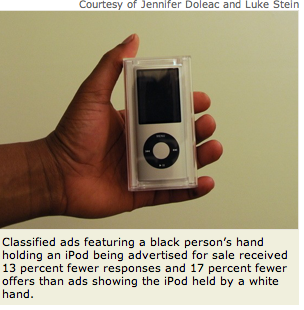The Raw Truth About Your Business Relationships!
 Many years ago I had a meeting with a buyer to discuss adding another line of business to his account. I felt that I could save him money, and I felt I could make some money for my company and me as well. He was always an easy person to talk to, and I measured my relationship with him at to be at the highest level. As his need for the product was high, this might just be a matter of timing. He was accepting proposals from three vendors in total.
Many years ago I had a meeting with a buyer to discuss adding another line of business to his account. I felt that I could save him money, and I felt I could make some money for my company and me as well. He was always an easy person to talk to, and I measured my relationship with him at to be at the highest level. As his need for the product was high, this might just be a matter of timing. He was accepting proposals from three vendors in total.
I went to him, presented a ‘death grip’ (a proposal that had price and product that could not be denied) and his response was, “I am going to stay where I am on this one. You price is good, and I like your organization, but maybe next time.
________________________
Almost every business relationship has a limit, and it is usually because of the trust factor. When the requisite level of trust is absent, the resulting trust deficit might be based on the sales professional, and in many cases, it will be based on the company that sales professional represents. Either way it ‘stops’ the sales process in a way that does not result in any revenue changing hands.
In the case above, the buyer did not have enough confidence in either me, or my organization, to let money change hands. Getting the order means getting over this “hump”. Obviously this was a learning situation for me.
The Trust Deficit
“Every sale has five basic obstacles: no need, no money, no hurry, no desire, no trust.”
Zig Ziglar
No one wants to think that they are not trusted, but usually this is not personal …this is business! You have not necessarily done any wrong, but you may still have work to do getting rid of the trust deficit
This obstacle is seldom meant to beckon that you aren’t trustworthy, it is meant to show the relationship is not as solid and intimate as you thought. You can overcome this lack of trust, and should not take it personally.
Are You At a Disadvantage?
Black sales professionals should assume they are at a disadvantage until it is proven otherwise. Let me explain that. Being at a disadvantage means that you have work to do. Assume you do not have all of the trust necessary to close the deal, but the good part is that you are in the game.
Trust is an essential factor to consummate a business relationship, and the raw truth is that when you are Black or another minority, you need to work continuously to make sure that trust is present as you may be lacking one of the most important aspects of a positive business relationship, something I call preference. If you will remember from earlier of issues of Black Sales Journal, specificallyBSJ 12/27/2010 Preference, Prejudice, and Perceptions and Your Customer, and BSJ 12/12/2011 Racial Preference in Actionto name an important few, preference is important. It is at the top, and the bottom, of any business relationship.
 Preference is ‘socially’ legal. Preference is still different from “racial preference” as you will see if you read the above articles. Racial preference is vexing, and is everything wrong with business. Racial preference is racial prejudice!
Preference is ‘socially’ legal. Preference is still different from “racial preference” as you will see if you read the above articles. Racial preference is vexing, and is everything wrong with business. Racial preference is racial prejudice!
I will speak more on this important item in a moment.
Building Trust
How do you get the trust you need. How do you generate the most complete relationship? Well, I am going to point you in the direction of a couple of in-depth articles on building the trustful relationship between you and the customer:
 Black Sales Journal 7/11/2011- Deepening Your Customer Relationships – The Holy Grail for the Black Sales Professional
Black Sales Journal 7/11/2011- Deepening Your Customer Relationships – The Holy Grail for the Black Sales Professional
Read this to know how to construct and maintain the strongest relationships. Remember, relationships are everything.
Black Sales Journal 1/20/2011 – Deepening Your Customer Relationships Part 2
Read this one to gain access to a simple customer profile that you can change as you see necessary, and other tools to help you record and recognize the relationship and its strength.
The Role of Racial Preference
Racial preference is essentially racial prejudice, and there is frankly no other way to state it. Are you at a disadvantage? The answer is ‘possibly’.
We need to face the fact that there are many buyers who could care less about your color, and believe in fairness. Many more believe that they do, but are affected by forces that they don’t even recognize.
That is the nature of racial prejudice. It is easily hidden from view, and with that in mind I suggest you always assume you are at a disadvantage.
Read about it in the articles I cite, you will recognize it, and learn to make the proper assumptions.
Relationship Building 101
Build a relationship for all of the reasons cited in these posts, and put your energy and resources toward making sure that you cement together a solid, enduring relationship founded in trust. Deliver on your promises and commitments and you will create the underpinnings of a trusting relationship.
Ask the customer how you are doing…get meaningful feedback from this important relationship. More in Black Sales Journal 3/12/2012, Ask Your Customer for Feedback. You will be amazed at how the customer begins to start to develop an affinity for you if you will put yourself on the line like this.
Be the best at what you do, and remember you cannot win without your customer’s trust, and relationships are everything.
Your comments are appreciated. You can reach me at michael.parker@blacksalesjournal.com.
 September 24, 2017
|
Posted by Admin9!
September 24, 2017
|
Posted by Admin9!
 Categories:
Categories:  Tags:
Tags: 


Your Comments